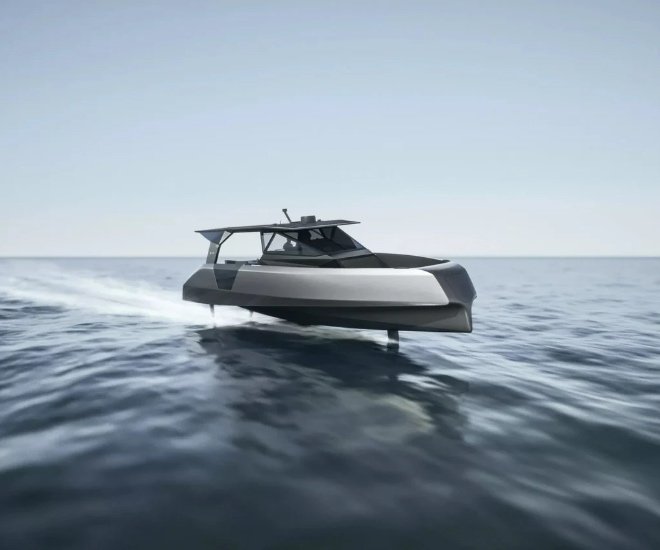Airbus’s Hybrid Racer Helicopter Just Completed Its First Flight

Who said sustainability and speed can’t go together?
The Racer just launched a new era for high-speed helicopters—or a new hybrid version of aircraft. First announced in 2017, Airbus’s experimental aircraft made its first flight recently, hitting the aerospace giant’s performance and sustainability targets. It also made its first public display yesterday in Marseille.
“The aim of the Racer is not to go as fast as possible,” said Julien Guitton, who heads up the program, in a statement. “We wanted to offer enhanced operational capabilities at the right price for missions where speed can really be an asset.”
The experimental Racer is fast, but burns 20 percent less fuel than a helicopter flying 50 mph slower.
Airbus
In other words: Speed is important, but not the most important feature. Guitton said clients want a fast helicopter, but “speed at any price” is “of no interest to anyone.”
The Racer was launched as part of Europe’s Clean Sky 2 program which, along with Airbus, involved 40 partner companies from 13 European countries. The project had a very ambitious goal of achieving a 20 percent reduction in fuel consumption and CO2 emissions, compared with a conventional helicopter of the same weight. The design team also wanted the Racer to have a significant reduction in its noise and vibration.
To achieve this, the designers created what they call a “compound” design, which involved a unique combination of a helicopter rotor, fixed wings, an aerodynamic fuselage, and rear-racing propellers. The Racer also has hybrid propulsion along with a custom engine management system and autopilot.

More than the sum of its parts: The different components that add to a very fast, efficient aircraft.
Airbus
Using the engine management system brings propulsion to its most efficient output for both speed and fuel efficiency, while the autopilot coordinates the Racer’s very different features together to assure its best flight performance. The aircraft went through multiple simulations, and in April, the first flight tests were held to see if the design matched its real-world potential and goals. It did.
Airbus said the configuration delivered 20 percent less fuel burn per nautical mile at 180 knots (207.14 mph) compared to a conventional helicopter at 130 knots (149.6 mph).
Besides all the different exterior pieces working together, the Racer’s innovative Safran Eco-Mode hybrid-electric system basically puts one of its two Aneto-1X engines on hold while the whirlybird is in cruise mode. “It has the ability to restart it almost instantously if necessary,” says Guitton. “The aircraft flies slightly slower than it would with both engines running, but it’s still faster than a conventional helicopter.”

The Racer is based on this earlier Airbus X3 experimental, high-speed helicopter.
Airbus
That generates fuel savings up to 20 percent. It has a potential top speed of 248.5 mph, slower than the 293 mph top speed of the Eurocopter X3, the experimental aircraft the Racer was based on. But the Racer’s fuel efficiency more than makes up for the lower speed. It’s still fast—about 100 mph faster than Airbus’s top executive helicopter, the ACH160.
Boeing’s V-22 Osprey uses tilting rotors as does Leonardo’s AW609, though they both look more like a conventional aircraft. The Racer’s wings are optimized in all phases of flight, thanks to flaps on the trailing edge. The wings also take 40 percent of the load off the rotor to reduce vibration which, says Guitton, will make it more comfortable than most other helicopters.



